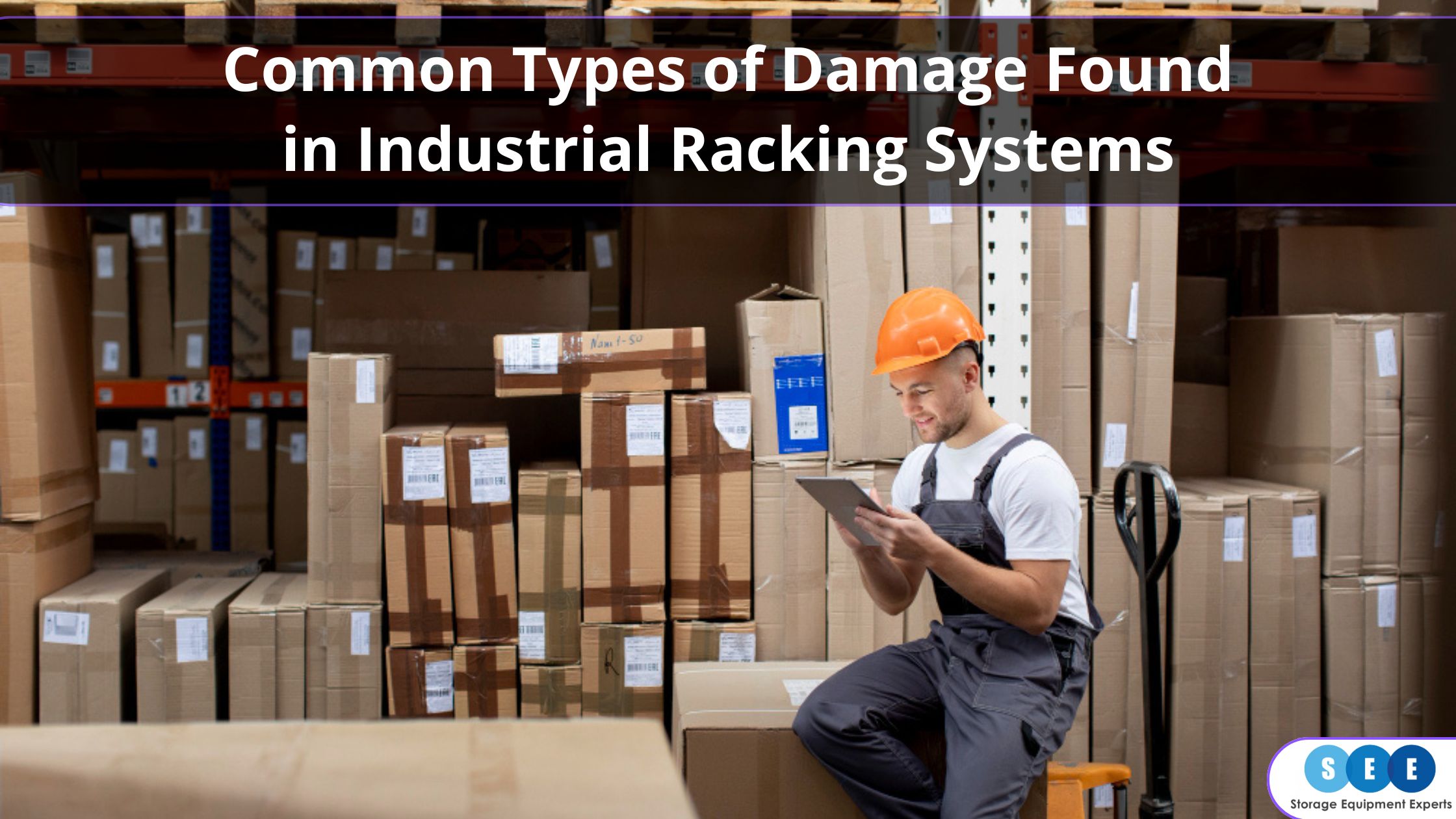What is the Role of Racking Systems in Warehouse Disaster Preparedness?
Disaster preparedness is a vital part of warehouse operations, ensuring that disruptions are minimised and both employees and inventory remain safe during emergencies. While it’s easy to focus on evacuation plans or inventory management, one element that often gets overlooked is the racking system.
The right racking system can play a key role in preventing and mitigating damage during disasters like earthquakes, fires, floods, severe weather and other major problems. In this article, we’ll look at how racking systems affect disaster preparedness, from ensuring structural resilience to maintaining operational continuity. We’ll also share practical tips for strengthening your warehouse’s readiness.
1. Why is Disaster Preparedness Important for Warehouses?
Disasters can (and usually do) strike unexpectedly, disrupting business operations, damaging inventory and jeopardising employee safety. Warehouses, which typically store high volumes of goods, face unique challenges when preparing for emergencies.
Risks Warehouses Face
- Natural Disasters: Earthquakes, floods, hurricanes, or tornadoes can cause structural damage to racks and jeopardize inventory safety. While most of these are rare in the UK, they still need to be planned for.
- Fires: Warehouses that store flammable goods are at a higher risk of fires spreading rapidly, but realistically all warehouses are at risk of a fire taking hold.
- Human Error: Incorrectly loaded racks or poor maintenance can exacerbate damage during emergencies.
Proper disaster preparedness ensures these risks are mitigated, protecting lives, assets and operations. At the heart of this preparation lies the racking system, which plays a central role in maintaining stability during unexpected events.
2. The Role of Racking Systems in Disaster Preparedness
Warehouse racking systems aren’t just storage solutions – they’re the centrepiece of warehouse safety. Their ability to withstand external pressures, support inventory and protect employees makes them a cornerstone of disaster preparedness as well.
How Do Racking Systems Contribute?
- Structural Stability: A well-designed racking system ensures that goods remain secure, even in the event of sudden shocks, vibrations or external impacts.
- Space Optimization for Emergency Evacuations: Properly configured racks leave clear aisles and pathways, facilitating quick and safe evacuations during emergencies.
- Mitigation of Secondary Damage: In cases of fires or floods, robust racks help contain goods, reducing the risk of debris falling or goods becoming hazards.
- Support for Business Continuity: Preventing damage to racking systems minimises inventory loss and ensures faster recovery post-disaster.
3. Key Features of Disaster Ready Racking Dystems
Racking systems can be designed or upgraded with specific features to enhance disaster resilience. The following components are particularly important:
Seismic Resistant Racks
Warehouses in earthquake-prone areas benefit significantly from seismic-resistant racks – these are designed to absorb shocks and vibrations without collapsing.
Anchor Bolts
Anchoring racks securely to the floor prevents tipping or shifting during disasters. These bolts are essential for both heavy-duty and standard racks.
Fire Resistant Materials
Using fire-resistant coatings or materials for racks helps slow the spread of flames, giving employees more time to evacuate and reducing damage to goods.
Load Capacity Markings
Clear load markings ensure racks are not overloaded, reducing the risk of collapses during emergencies.
Protective Barriers
Adding column protectors and end-of-aisle barriers safeguards racking systems from impacts caused by forklifts or falling debris.
4. Regular Racking Inspections and Maintenance
A racking system is only as reliable as its maintenance routine. Regular racking inspections are the only reliable way to identify vulnerabilities that could worsen during a disaster.
What to Include in Racking Inspections
- Structural Integrity: Look for bent beams, loose bolts and/or corrosion that could weaken the system.
- Weight Distribution: Check that all loads are evenly distributed and do not exceed capacity limits.
- Floor Anchors: Confirm that racks are securely bolted to the floor and have not shifted over time.
- Fire Safety Equipment: Verify the presence of fire extinguishers, sprinklers and other fire-prevention tools around the racking area.
Schedule professional inspections at least once a year and perform internal checks monthly to ensure ongoing warehouse health and safety. The industry standard in the UK is SEMA – make sure that your inspections meet these levels of detail.
5. Training Employees for Disaster Scenarios
No disaster preparedness plan is complete without properly trained employees. Warehouse staff need to understand how to interact with racking systems during emergencies to avoid accidents and minimise damage.
Key Training Areas
- Emergency Procedures: Teach employees how to safely evacuate without damaging racks or obstructing aisles.
- Proper Loading Practices: Show staff how to load racks correctly to prevent top-heavy configurations that could collapse during disasters.
- Damage Reporting: Encourage employees to report any signs of damage immediately, ensuring that issues are addressed before emergencies occur.
Safety drills and refresher training sessions should be held regularly to keep employees prepared and informed.
6. Common Challenges in Disaster Ready Racking Systems
While racking systems are of the utmost importance in disaster preparedness, implementing them comes with challenges. Understanding these obstacles can help warehouses overcome them effectively.
Common issues
- Cost: Upgrading to disaster-resistant racks or retrofitting existing systems can be expensive. However, the long-term savings in reduced damage and downtime outweigh the initial investment.
- Compliance with Regulations: Warehouses in the UK must adhere to HSE safety standards.
- Human Negligence: Even the best racking systems fail if employees neglect load limits, fail to report damage or bypass safety protocols.
Regular audits, training and adherence to manufacturer guidelines can help overcome these challenges.
SEE Racking Inspections
The structural integrity, design features and proper maintenance of warehouse racking systems directly impact how well a facility can withstand emergencies. Investing in disaster-ready racking, training employees and conducting regular inspections means that warehouses can significantly reduce risks and improve the safety of their people and assets.
Preparation isn’t just a precaution – it’s a responsibility. Strengthen your racking systems today to safeguard your warehouse tomorrow. You can find out more about warehouse racking and safety by checking out the SEE Racking Inspections blog today.


